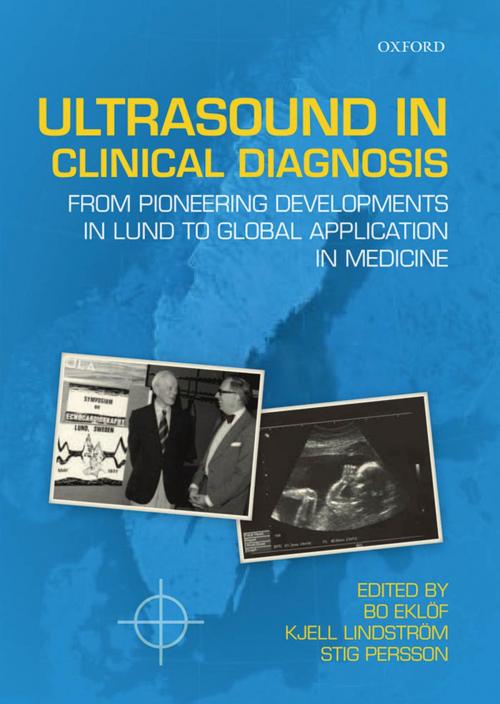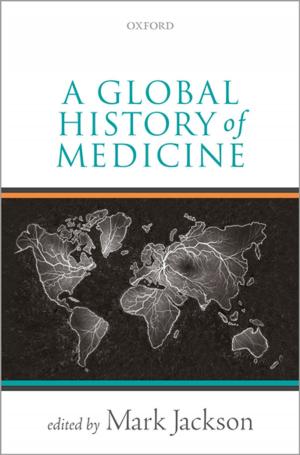Ultrasound in Clinical Diagnosis
From pioneering developments in Lund to global application in medicine
Nonfiction, Health & Well Being, Medical, Allied Health Services, Radiological & Ultrasound, Reference, History| Author: | ISBN: | 9780191635571 | |
| Publisher: | OUP Oxford | Publication: | November 24, 2011 |
| Imprint: | OUP Oxford | Language: | English |
| Author: | |
| ISBN: | 9780191635571 |
| Publisher: | OUP Oxford |
| Publication: | November 24, 2011 |
| Imprint: | OUP Oxford |
| Language: | English |
On October 29th 1953 in Lund, Sweden, Inge Edler, cardiologist, and Hellmuth Hertz, physicist, performed the first successful Ultrasoundcardiogram (UCG), later renamed Echocardiogram. A few weeks later, on December 16th, the neurosurgeon Lars Leksell diagnosed an intracranial bleeding in a 16-month-old boy using the same equipment, and Echoencephalography was born. The Lundensian obstetrician Bertil Sundén was in 1962 able to take the first ultrasound picture of twins in pregnancy. These three world premieres at the Lund University were the foundation for the tremendous development of diagnostic ultrasound. Before it is too late, the history in Lund will be told, and with this history as background Ultrasound in Clinical Diagnosis brings together some of the leading ultrasound experts of today to bring us up to date with the use of ultrasound in its ever-increasing importance for diagnosis in many areas of medicine. Peter Wells writes in his Foreword that "this fascinating book serves more than one purpose: it is an historical record of the pioneering developments in clinical ultrasonic diagnosis that took place in Lund... what we now recognise as one of the greatest medical innovations of the twentieth century... Besides its historical content, this book also includes scholarly reviews of the state-of-art in adult and paediatric cardiology, obstetrics and gynaecology, vascular disease in several countries and, primarily from technical perspective, radiology, as well as an overview of contrast studies". Other chapters describe the development in ophthalmology and oto-rhino-laryngology as well as the industrial development of ultrasound equipment. This book will be valuable and interesting to those who are interested in the development of ultrasound diagnosis in medicine.
On October 29th 1953 in Lund, Sweden, Inge Edler, cardiologist, and Hellmuth Hertz, physicist, performed the first successful Ultrasoundcardiogram (UCG), later renamed Echocardiogram. A few weeks later, on December 16th, the neurosurgeon Lars Leksell diagnosed an intracranial bleeding in a 16-month-old boy using the same equipment, and Echoencephalography was born. The Lundensian obstetrician Bertil Sundén was in 1962 able to take the first ultrasound picture of twins in pregnancy. These three world premieres at the Lund University were the foundation for the tremendous development of diagnostic ultrasound. Before it is too late, the history in Lund will be told, and with this history as background Ultrasound in Clinical Diagnosis brings together some of the leading ultrasound experts of today to bring us up to date with the use of ultrasound in its ever-increasing importance for diagnosis in many areas of medicine. Peter Wells writes in his Foreword that "this fascinating book serves more than one purpose: it is an historical record of the pioneering developments in clinical ultrasonic diagnosis that took place in Lund... what we now recognise as one of the greatest medical innovations of the twentieth century... Besides its historical content, this book also includes scholarly reviews of the state-of-art in adult and paediatric cardiology, obstetrics and gynaecology, vascular disease in several countries and, primarily from technical perspective, radiology, as well as an overview of contrast studies". Other chapters describe the development in ophthalmology and oto-rhino-laryngology as well as the industrial development of ultrasound equipment. This book will be valuable and interesting to those who are interested in the development of ultrasound diagnosis in medicine.















